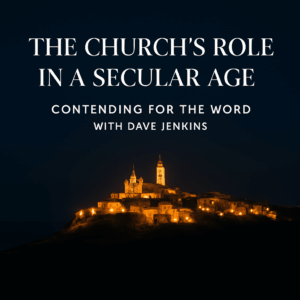⏱️ Estimated Reading Time: 6 min read
I became an English teacher because I loved books and wanted other people to love them as well. However, I must admit that I probably killed the joy of reading for several of my students because I expected them to “study” the books like I did. I wanted notes in the margins, circled keywords and underlining. Lots of underlining. I wanted them to look for metaphors and motifs, to chart the plot, to analyze the characters, and to explain the theme.
And, of course, those skills make for better readers, but those skills aren’t very helpful if the students never open the book.
I suspect that one reason students never open the book is that they think they have to have some special literature detective skills, skills possessed only by a select few with highlighters and sticky page flags in hand.
And I bet that a lot of people never read the Bible for a similar reason. They don’t think they are equipped with the right skills. They would rather someone else do the heavy lifting and give them the Cliff Notes version.
Thankfully, we as modern Christians have access to multiple resources that can help teach us how to do inductive studies of the Scriptures (Howard Hendrick’s Living by the Book, Kay Arthur’s Precept Bible Studies, and Jen Wilkin’s Women of the Word), but after over fifteen years serving in the church, I have realized that most people are not going to do an inductive Bible study for whatever reason.
However, after fifteen years serving in the church, I realize that most people are not going to do an inductive Bible study because they say it takes too much time, seems like schoolwork, or makes them feel inadequate. If they do read Scripture on a regular basis––and many don’t they read it in a devotional or a Sunday School lesson or on an inspirational Pinterest board or the back of a t-shirt. And, of course, these can be helpful resources, but they don’t necessarily lend themselves to teaching people how to study the Word for themselves.
Yet, I do believe God intends all believers––even those who won’t do an inductive Bible study––to know and enjoy Him through His Word.
His Word is for everyone. The young and the old. The Ph.D. and the high school dropout. The stay-at-home mom with an hour of quiet before her children wake up and the working mom who wakes up at five and still barely makes it out the door on time to drop her children off at school.
And, for that reason, we encourage people in our church to use six simple yet profound questions to direct their Bible reading.
The Six Questions
- What is God saying? (Summary/Main Points)
- Who is God? (What is He like?)
- What has God done? (Pointing to or flowing from Jesus’ life, death, resurrection)
- Who am I? (Outside of Jesus and In Jesus?)
- What should I do? (How would my life be different if this truth were explosively alive in my heart?)
- Why is the Spirit revealing this truth to me right now? (Give space to both listen and share anything you think the Spirit may be leading you to share with one another.)
These questions save us from the dilemma I saw my daughter face this past semester as she sat down to do her algebra and chemistry homework. She just wanted to sit down and get it done (or have me do it for her). She didn’t want to open her notes or pull up her online textbook. She didn’t want to use the resources she had been given.
Yet isn’t this how we often approach the Bible? We read it with one question in mind: What does it say I should I do? We read it like a list of imperatives, and in turn, we attempt to muster up the fruit of the Spirit, squeeze out the attributes of love, and goad ourselves into obeying the Ten Commandments. We forget that God has given us the gospel as the resource that empowers us to live godly, obedient lives––to do what He tells us to do.
Gospel indicatives––the truth of what Christ has already done on our behalf––allow us to live out gospel imperatives––the commands that tell us how we should live as followers of Christ.
That’s why these six questions are so beneficial. They force us to turn our eyes on God as we ask who He is and what He is like. No matter what passage we are reading, they call us to consider the perfect life Jesus lived in our place, the atoning, substitutionary death He died for us, and the new creation He has made us through His resurrection. They ground us in the past, present, and future work of Christ––all the promises He has fulfilled and all the promises He will fulfill. They bring us to a place where we behold the glory of the Lord in both salvation history and our own stories, and as 2 Corinthians 3:18 asserts, it is through beholding Christ that we are being transformed into the same image––the image of Christ.
Our transformation, our sanctification, comes through seeing Jesus as He is, not as we want Him to be. When our eyes are set on Jesus, the veil is removed. We remember who He says we are. We are loved. We are saved. We are children of God. We are disciples. We have the Spirit, and though we are being sanctified, transformed from one degree of glory to another, one day we will see Him and be like Him (1 John 3:2). The Spirit will fill our minds with these truths and empower us to be who He tells us we are and do what He tells us to do. Our Christ-abiding results in our fruit-bearing.
And while the Word is for all people and all times, God has given it to us as daily bread. He wants us to partake of it so that we can enjoy Him and bless others in the day He has set before us. With the timely help of the Spirit, His truth can become explosively alive in our hearts.
God does not call us to come to His Word as arrogant experts or helpless students. He calls us to come and behold Jesus as Spirit-filled children of God. He calls us to His God-breathed and all-sufficient Word so that we can live in the power of the gospel.



